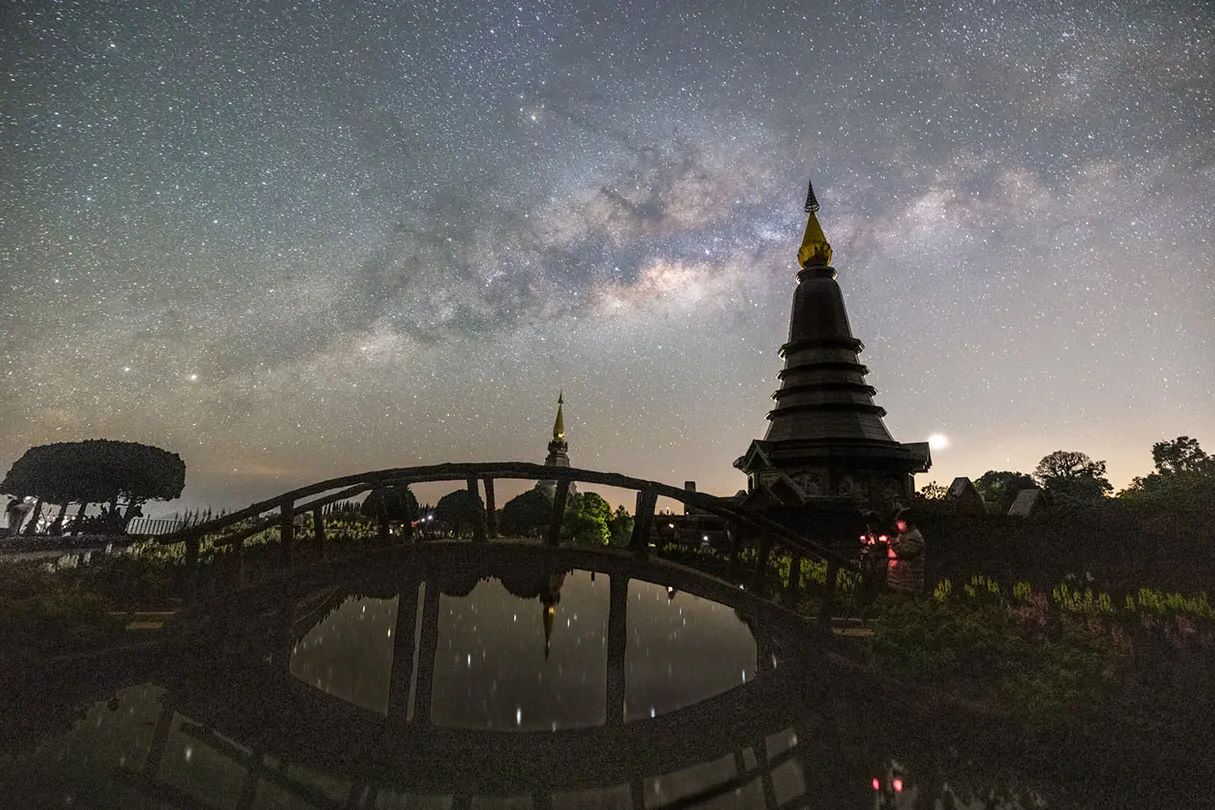Silent Starlight In Celestial Chasms

Have you ever wondered where you can find the best stargazing spots in the world? Imagine lying on a blanket, looking up at a sky filled with twinkling stars. Some places on Earth offer such clear, dark skies that you can see the Milky Way with your naked eye. From the deserts of Chile to the remote islands of Hawaii, these locations provide the perfect backdrop for an unforgettable night under the stars. Whether you're an amateur astronomer or just love the beauty of the night sky, these destinations will leave you in awe. Ready to pack your telescope and head out? Let's find out where to go!
Silent Starlight in Celestial Chasms
Imagine standing under a sky so clear, you can see the Milky Way stretching across the heavens. Celestial chasms offer some of the best stargazing spots on Earth. Here are some places where you can experience silent starlight in all its glory.
1. Grand Canyon, USA
The Grand Canyon isn't just for daytime views. At night, the canyon transforms into a stargazer's paradise. The high elevation and dry climate make for crystal-clear skies.
- Why it's special: The vastness of the canyon adds a dramatic backdrop to the night sky.
- Best time to visit: Late spring to early fall when the weather is mild.
2. Atacama Desert, Chile
Known as one of the driest places on Earth, the Atacama Desert offers unparalleled views of the night sky. Its remote location means minimal light pollution.
- Why it's special: The desert's arid conditions provide some of the clearest skies in the world.
- Best time to visit: April to October, during the dry season.
3. Mauna Kea, Hawaii
Mauna Kea is a dormant volcano that stands nearly 14,000 feet above sea level. Its summit is home to some of the world's most advanced telescopes.
- Why it's special: The high altitude and isolation make it perfect for stargazing.
- Best time to visit: Year-round, but winter offers the clearest skies.
4. Jasper National Park, Canada
Jasper National Park is a designated Dark Sky Preserve, meaning it's protected from light pollution. The park's rugged terrain and pristine lakes add to the experience.
- Why it's special: The park hosts an annual Dark Sky Festival with astronomy experts.
- Best time to visit: Fall, when the skies are clearest and the weather is cool.
5. Namib Desert, Namibia
The Namib Desert is one of the oldest deserts in the world. Its remote location and lack of light pollution make it an ideal spot for stargazing.
- Why it's special: The desert's unique landscape provides a stunning foreground for the night sky.
- Best time to visit: May to September, during the dry season.
6. Aoraki Mackenzie, New Zealand
Aoraki Mackenzie is another Dark Sky Reserve, known for its exceptionally clear skies. The reserve covers a large area, offering plenty of spots for stargazing.
- Why it's special: The Southern Hemisphere offers views of constellations not visible from the north.
- Best time to visit: Winter months, when the skies are clearest.
7. Uluru, Australia
Uluru, also known as Ayers Rock, is a massive sandstone monolith in the heart of Australia. Its remote location makes it perfect for stargazing.
- Why it's special: The rock itself adds a mystical element to the stargazing experience.
- Best time to visit: Winter, when the skies are clearest and temperatures are cooler.
8. La Palma, Canary Islands
La Palma is one of the best places in Europe for stargazing. The island's high altitude and clear skies make it a popular spot for astronomers.
- Why it's special: The island is home to the Roque de los Muchachos Observatory.
- Best time to visit: Spring and autumn, when the skies are clearest.
9. Death Valley, USA
Death Valley is one of the hottest places on Earth, but its night skies are something to behold. The park is a designated Dark Sky Park, ensuring minimal light pollution.
- Why it's special: The valley's extreme conditions make for some of the clearest skies in the USA.
- Best time to visit: Winter, when temperatures are more bearable.
10. Galloway Forest Park, Scotland
Galloway Forest Park is the first Dark Sky Park in the UK. Its remote location and lack of light pollution make it an excellent spot for stargazing.
- Why it's special: The park offers guided stargazing tours and events.
- Best time to visit: Autumn and winter, when the skies are clearest.
Embracing the Night Sky
Silent starlight in celestial chasms offers a unique experience. Stargazing in remote locations lets you connect with the universe. The quiet, vast sky filled with twinkling stars can be both humbling and awe-inspiring.
Places like the Grand Canyon or the Atacama Desert provide perfect spots for this activity. These locations have minimal light pollution, making the stars appear brighter. Remember to bring a telescope or binoculars for a closer look at constellations and planets.
Camping under the stars adds another layer to the adventure. The sounds of nature combined with the night sky create a peaceful atmosphere.
Whether you're an astronomy enthusiast or just looking for a serene escape, stargazing in these celestial chasms is unforgettable. Embrace the night sky and let the silent starlight guide your thoughts.

